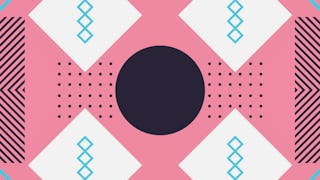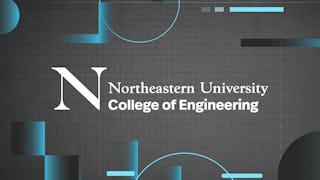This course is focused on the early user experience (UX) challenges of research, planning, setting goals, understanding the user, structuring content, and developing interactive sequences. While the concepts covered will translate to many kinds of interactive media (apps, digital kiosks, games), our primary focus will be on designing contemporary, responsive websites. In this course you will complete the first half of a large scale project—developing a comprehensive plan for a complex website—by defining the strategy and scope of the site, as well as developing its information architecture and overall structure. Along the way we will also discuss:

Enjoy unlimited growth with a year of Coursera Plus for $199 (regularly $399). Save now.

Web Design: Strategy and Information Architecture
This course is part of UI / UX Design Specialization

Instructor: Roman Jaster
83,786 already enrolled
Included with
(1,254 reviews)
Skills you'll gain
Details to know

Add to your LinkedIn profile
See how employees at top companies are mastering in-demand skills

Build your subject-matter expertise
- Learn new concepts from industry experts
- Gain a foundational understanding of a subject or tool
- Develop job-relevant skills with hands-on projects
- Earn a shareable career certificate

There are 5 modules in this course
What's included
1 video4 readings
This week I will give you a brief overview of the user experience process that I will teach in this course sequence. We will begin by defining the term "user experience", and then briefly look at the five phases of UX design: Strategy, Outline of Scope, Sitemap, Wireframes, and Visual Mockups. I will also talk about the differences between mobile apps and websites, and the differences between waterfall and agile approaches to UX design. Lastly, I will introduce you to the main project that you will be working on in this course and the one that follows it. You’ll be starting your first assignment at the end of the module. Last, here's something to keep in mind this week: “Design is not just what it looks like and feels like. Design is how it works.”—Steve Jobs
What's included
13 videos7 readings2 assignments1 peer review1 discussion prompt
This week is all about strategy. We will talk about how to conduct research in the beginning of a project. And I will tell you about the importance of defining a target audience for your website. We’ll also discuss how to determine user needs and client needs. The strategy that you develop in this first step in the UX process will influence all decisions you make further down the line. That’s why it’s so important to take the time and think about what you want to accomplish, what the goals are, and how they might be measured when the project launches.
What's included
9 videos6 readings1 assignment1 peer review
By now you should have a pretty clear idea what your projects will be about and who your target audience is. This week we will talk about how to take the user and client needs that you have established and create a set of content and functionality requirements from them. In other words, you’re transforming your overarching goals from last week into specific requirements for your site.
What's included
6 videos2 readings1 assignment1 peer review
Welcome to the last week of this course. With your outline of scope in hand, you will now learn how to transform the content and functionality requirements determined last week into a navigable structure. This structure will be visualized by something called a sitemap. I’ll tell you all about sitemaps and how to create them. Along the way we will also define the term "information architecture". And I will introduce a tool called TreeJack, which will enable you to test your site map on actual users.
What's included
10 videos7 readings1 assignment1 peer review1 discussion prompt
Earn a career certificate
Add this credential to your LinkedIn profile, resume, or CV. Share it on social media and in your performance review.
Instructor

Offered by
Explore more from Music and Art
 Status: Free Trial
Status: Free TrialCalifornia Institute of the Arts
 Status: Preview
Status: PreviewNortheastern University
 Status: Preview
Status: PreviewNortheastern University
 Status: Free Trial
Status: Free Trial
Why people choose Coursera for their career




Learner reviews
1,254 reviews
- 5 stars
85.08%
- 4 stars
11.24%
- 3 stars
2.31%
- 2 stars
0.87%
- 1 star
0.47%
Showing 3 of 1254
Reviewed on Apr 4, 2021
Amazing course! The way it's explained with real examples. Alyson and Bradley's projects are insightful for learning. The course is much better than the first 2 of the specialization.
Reviewed on Feb 7, 2019
Jasper is a good teacher and has clearly put a lot of time and effort into this course. It gives a sound theoretical understanding into UI and UX.
Reviewed on Nov 25, 2020
Well structured and knowledgable lectures. Concise and practical exams were beneficial to understand and applying the content to an actual project.

Open new doors with Coursera Plus
Unlimited access to 10,000+ world-class courses, hands-on projects, and job-ready certificate programs - all included in your subscription
Advance your career with an online degree
Earn a degree from world-class universities - 100% online
Join over 3,400 global companies that choose Coursera for Business
Upskill your employees to excel in the digital economy
Frequently asked questions
Since this is a graphic design course, to complete the assignments you will need access to a desktop or laptop computer with the appropriate software installed. You can't really do graphic design work properly on a smartphone or tablet. Adobe CC software is recommended for these courses, but alternatives are available. Software will be reviewed in greater detail in the first week of the course.
To access the course materials, assignments and to earn a Certificate, you will need to purchase the Certificate experience when you enroll in a course. You can try a Free Trial instead, or apply for Financial Aid. The course may offer 'Full Course, No Certificate' instead. This option lets you see all course materials, submit required assessments, and get a final grade. This also means that you will not be able to purchase a Certificate experience.
When you enroll in the course, you get access to all of the courses in the Specialization, and you earn a certificate when you complete the work. Your electronic Certificate will be added to your Accomplishments page - from there, you can print your Certificate or add it to your LinkedIn profile.
More questions
Financial aid available,
¹ Some assignments in this course are AI-graded. For these assignments, your data will be used in accordance with Coursera's Privacy Notice.

